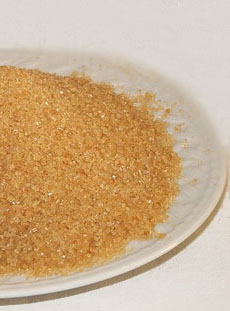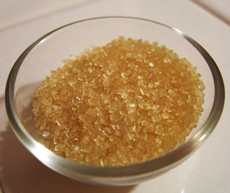TIP OF THE DAY: Demerara Sugar & Turbinado Sugar: The Difference
|
|
Demerara sugar is natural brown sugar made by partially refining sugar cane extract. It’s a more nutritious product than what we know as “light” and “dark” brown sugar. These are made by adding molasses to fully refined white sugar, which is stripped of its nutrients. Molasses itself is a by-product of sugar cane refining. It’s the residue that is left after all the sugar crystals are extracted from the cane juice. Demerara sugar is named after the Demerara colony in Guyana, a small independent state on the north coast of South America, where the style of sugar was first produced. Quite a few dessert and candy recipes call for caramelized sugar, which means placing white granulated sugar in a pan and heating it until the sugar browns and takes on a caramel flavor. It’s easy enough to do, but you have to continuously stir the sugar so it doesn’t burn. But you can skip this step entirely by substituting demerara sugar. |
|
|
We also like the added flavor demerara sugar brings to cookies, cakes and blondies—more complex and less cloying. Note that in recipes requiring a cup or more of sugar, more butter or other fat needs to be added to compensate for the lower moisture compared to brown sugar. |
||




